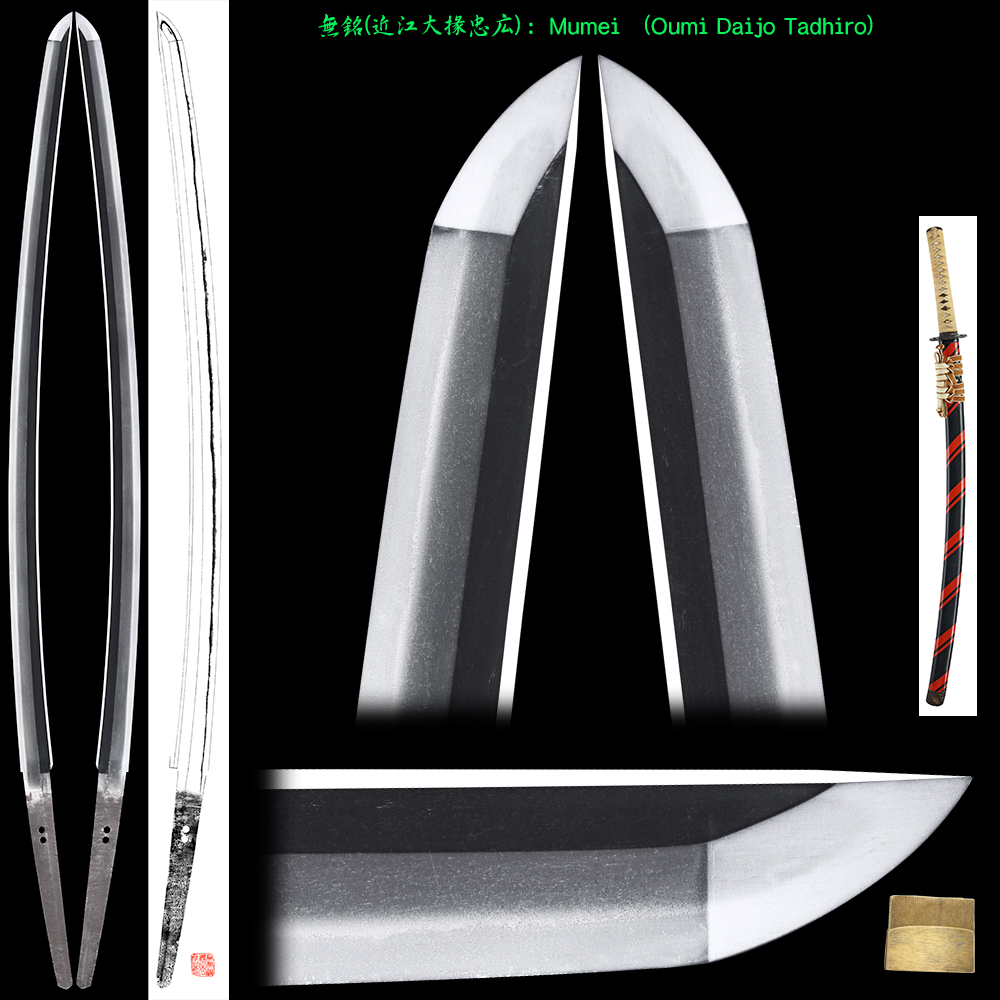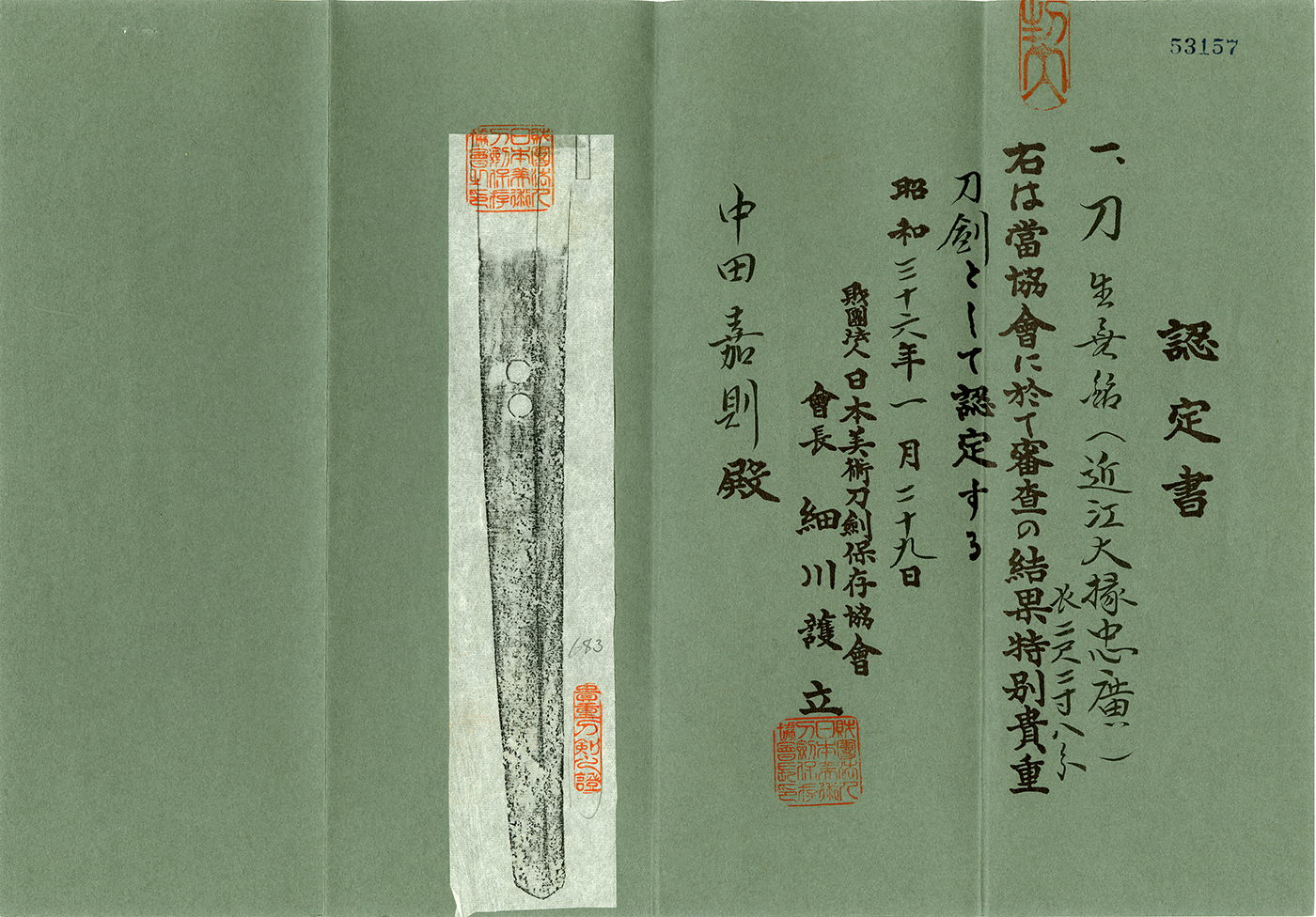Katana: Mumei (Oumi Daijo Tadhiro)
2017/01/05
Katana in Koshirae (NBTHK Tokubetsu Kicho paper)(Guarantee: NBTHK Hozon paper)
Signature : Mumei (Oumi Daijo Tadhiro)
Shinto: Jyojyo-Saku: O-Wazamono: Hizen
(We divide 4 sections for each sword as Saijyo saku, Jyojyo saku
Jyo saku and regular saku)This Mumei (Oumi Daijo Tadhiro) belongs to Jo saki ranging.
The blade was polished.
Habaki: Gold Double Foiled Habaki
Blade length : 69.2cm or 1.15inches.
Sori : 2.2cm or 0.87inches.
Mekugi : 2
Width at the hamachi : 2.93cm or 1.15inches.
Width at the Kissaki : 1.98cm or 0.78inches.
Kasane : 0.73cm or 0.29inches.
Era : Edo period Circa Kanbun(1661-1672)
Shape : It is regular width and thickness nice shape katana
Jitetsu : Ko-Itame hada well grained with Jinie attache.d It is clear Konuka Hada.
Hamon : Chu-Suguha hamon. It id deep Nioguchi with some Koashi attached. Boshi is round ended.
Special feature : Tadahiro the Second was born Heisakuro Hashimoto as
a legitimate son of Tadayoshi the First. Tadahiro was only19 years old
when his father passed away in1632 but he was enough skillful to forge
sword at that time. Tadahiro designated the Omi-Daijo in 1641,
aged 29 and continued not only forging sword but also supervised many
pupils until his death in 1693, aged 80. He is known as a skillful swordsmith
almost all works are above the standard hizen-to.
He had been forged sword for a long period of time to leave
the largest number of swords among the swordsmiths of Hizen school.
He was good at both of Suguha-hamon and Choji-midare Hamon.
Especially the beauty of jitetsu called konuka-hada is appreciated as
the best among the hizen-to. His swords are ranked
at the Owaza-mono because of the sharpness.
Even though the blade is Mumei(unsigned) but NBTHK judged
as Oumi Daijyo Fuhiwara Tadahiro 2nd generation.
The blade is healthy.
Koshirae:
Tsuba: Mokko shape iron Tsuba, chrysanthemum and reef
are engraved with open work. Shoami. Late Edo period.
Fuchikashira: Iron with gold color. Higo. Middle Edo period.
Saya : Black Ishimeji with red stripes.
Menuki : Copper plate with dragon fly deisgn engraved in high relief and inlaid with gold.
Kojiri: Iron plate with dragon design engraved in high relief.
NBTHK Tokubetsu Kicho paper
We guarantee NBTHK Hozon Paper (The paper is NOT issued yet).
Aoi Art estimation paper : whole Oshigata.







